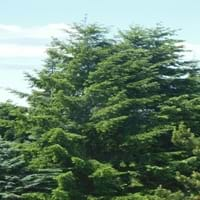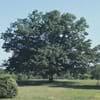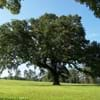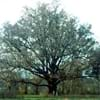Life Span
Perennial
Annual
Origin
Western United States, California, Canada, China
South America, Micronesia, New Zealand
Types
Balsam Fir, Cannan Fir, Fraser Fir, Grand Fir
Not Available
Habitat
Moist Soils, Rocky areas
coastal environs, Grassland, Roadsides, Waste areas, waterways
USDA Hardiness Zone
4-7
7-11
Sunset Zone
A2, A3, 1a, 1b, 2a, 2b, 3a, 3b, 4, 5, 6, 7, 9, 10, 14, 15, 16, 17
H1, 3a, 3b, 4, 5, 6, 7, 8, 9, 10, 11, 12, 13, 14, 15, 16, 17, 18, 19, 20, 21, 22, 23, 24
Habit
Upright/Erect
Clump-Forming
Flower Color
Not Available
Purple
Flower Color Modifier
Bicolor
Bicolor
Fruit Color
Sandy Brown
Not Available
Leaf Color in Spring
Dark Green
Green, Light Green, Dark Green
Leaf Color in Summer
Dark Green
Light Green
Leaf Color in Fall
Dark Green
Green, Light Green, Dark Green
Leaf Color in Winter
Dark Green
Dark Green, Tan
Leaf Shape
Needle like
Grass like
Plant Season
Spring, Summer, Fall, Winter
Spring, Summer, Fall, Winter
Sunlight
Full Sun
Full Sun
Type of Soil
Clay, Loam
Loam
The pH of Soil
Acidic, Neutral
Acidic, Neutral
Soil Drainage
Well drained
Well drained
Bloom Time
Not Available
Summer, Fall
Tolerances
Shade areas
Drought, Salt
Where to Plant?
Ground
Ground
How to Plant?
Seedlings, Stem Planting, Transplanting
Seedlings
Plant Maintenance
Low
Medium
Watering Requirements
Keep the ground moist but not water-logged, Requires consistently moist soil
Average Water Needs
In Summer
Lots of watering
Lots of watering
In Spring
Moderate
Moderate
In Winter
Average Water
Average Water
Soil pH
Acidic, Neutral
Acidic, Neutral
Soil Type
Clay, Loam
Loam
Soil Drainage Capacity
Well drained
Well drained
Sun Exposure
Full Sun
Full Sun
Pruning
No need to prune, No pruning needed
Remove damaged leaves, Remove dead branches, Remove dead leaves
Fertilizers
All-Purpose Liquid Fertilizer, fertilize every 2-3 weeks while growing
All-Purpose Liquid Fertilizer
Pests and Diseases
Beetles, Borers, Red blotch
Red blotch
Plant Tolerance
Drought
Drought
Flower Petal Number
Not Available
Single
Foliage Texture
Fine
Fine
Foliage Sheen
Matte
Matte
Attracts
Insects
Not Available
Allergy
Skin rash
Itchiness
Aesthetic Uses
Beautification, Landscape Designing, Showy Purposes, Used as Christmas tree
Showy Purposes
Beauty Benefits
Not Available
Not Available
Edible Uses
Yes
Sometimes
Environmental Uses
Air purification, Nesting sites for birds
Air purification
Medicinal Uses
Burns, Cough, Sore throat, Stomach pain, Wounds
Not Available
Part of Plant Used
Whole plant
Flowers, Leaves
Other Uses
Decoration Purposes, Economic Purpose, Oil is used for aromatherapy, Showy Purposes, Used As Food, Used for its medicinal properties, Used in biomass, Used in paper industry, Wood is used for making furniture, Wood is used for ship building, Wood is used in construction, Wood log is used in making fences
Animal Feed, Used as Ornamental plant
Used As Indoor Plant
Yes
No
Used As Outdoor Plant
Yes
Yes
Garden Design
Alpine, Feature Plant, Foundation, Screening / Wind Break, Shade Trees
Cutflower, Dried Flower/Everlasting, Feature Plant, Foundation, Groundcover, Mixed Border, Screening / Wind Break
Botanical Name
PSEUDOTSUGA menziesii
CORTADERIA jubata
Common Name
Douglas Fir
Purple Pampas Grass
In Hindi
डगलस फ़िर
Purple pampas grass
In German
Douglasfichte
Lila Pampasgras
In French
le sapin de Douglas
Pourpre herbe de pampa
In Spanish
abeto Douglas
hierba púrpura pampas
In Greek
έλατο Douglas
Μωβ γρασίδι παμπάς
In Portuguese
Douglas Fir
grama roxa pampas
In Polish
daglezji
Purpurowy trawa pampasów
In Latin
Douglas abies
Purpura Pampas herba
Phylum
Tracheophyta
Magnoliophyta
Class
Pinopsida
Liliopsida
Genus
Pseudotsuga
Cortaderia
Clade
Not Available
Angiosperms, Commelinids, Monocots
Tribe
Not Available
Not Available
Subfamily
Not Available
Not Available
Number of Species
Not Available
Not Available
Importance of Douglas Fir and Purple Pampas Grass
Want to have the most appropriate plant for your garden? You might want to know the importance of Douglas Fir and Purple Pampas Grass. Basically, these two plants vary in many aspects. Compare Douglas Fir and Purple Pampas Grass as they differ in many characteristics such as their life, care, benefits, facts, etc. Every gardener must at least have the slightest clue about the plants he wants to plant in his garden. Compare their benefits, which differ in many ways like facts and uses. The medicinal use of Douglas Fir is Burns, Cough, Sore throat, Stomach pain and Wounds whereas of Purple Pampas Grass is Not Available. Douglas Fir has beauty benefits as follows: Not Available while Purple Pampas Grass has beauty benefits as follows: Not Available.
Compare Facts of Douglas Fir vs Purple Pampas Grass
How to choose the best garden plant for your garden depending upon its facts? Here garden plant comparison will help you to solve this query. Compare the facts of Douglas Fir vs Purple Pampas Grass and know which one to choose. As garden plants have benefits and other uses, allergy is also a major drawback of plants for some people. Allergic reactions of Douglas Fir are Skin rash whereas of Purple Pampas Grass have Itchiness respectively. Having a fruit bearing plant in your garden can be a plus point of your garden. Douglas Fir has no showy fruits and Purple Pampas Grass has showy fruits. Also Douglas Fir is not flowering and Purple Pampas Grass is not flowering . You can compare Douglas Fir and Purple Pampas Grass facts and facts of other plants too.





